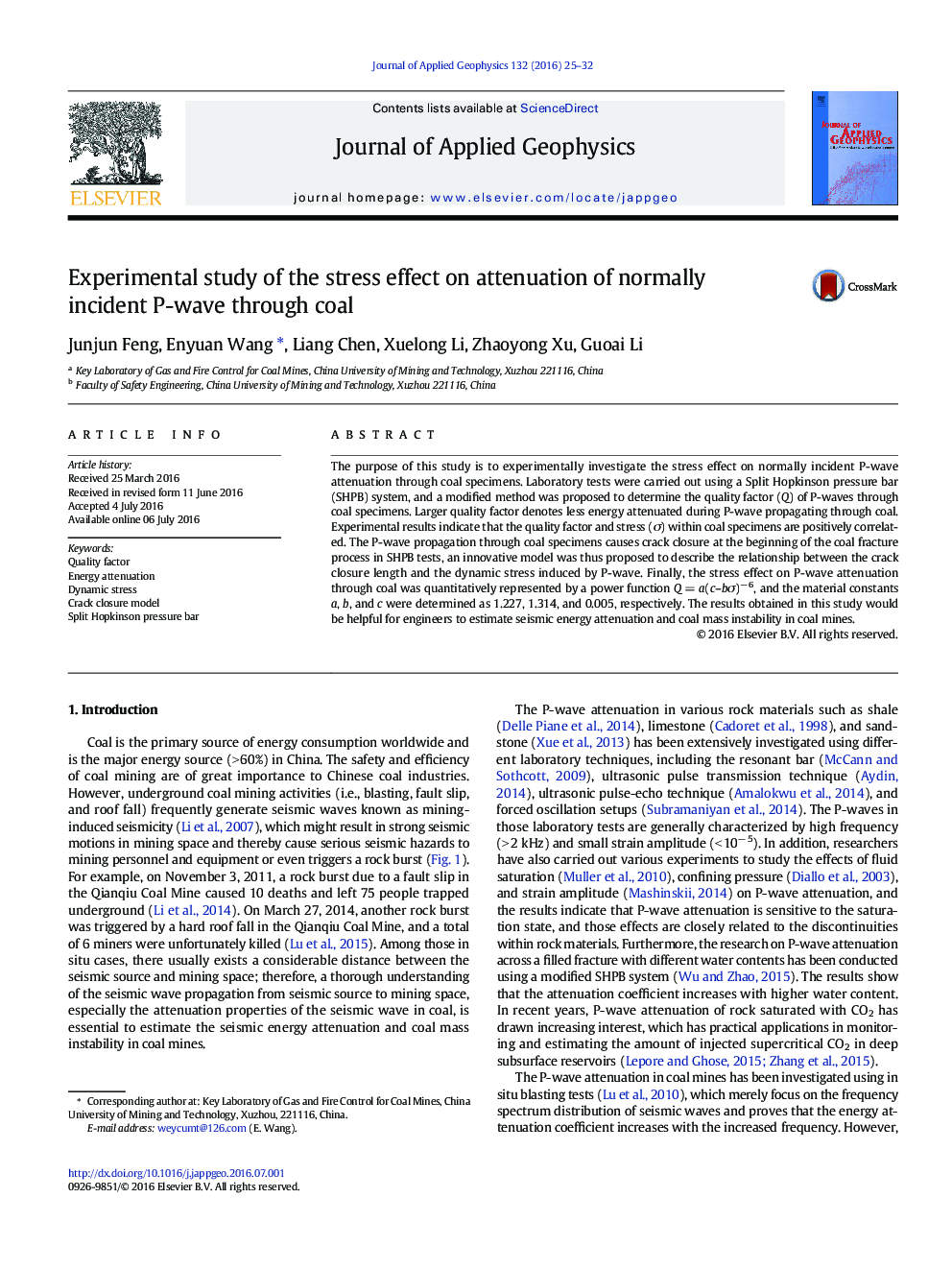| Article ID | Journal | Published Year | Pages | File Type |
|---|---|---|---|---|
| 6446913 | Journal of Applied Geophysics | 2016 | 8 Pages |
Abstract
The purpose of this study is to experimentally investigate the stress effect on normally incident P-wave attenuation through coal specimens. Laboratory tests were carried out using a Split Hopkinson pressure bar (SHPB) system, and a modified method was proposed to determine the quality factor (Q) of P-waves through coal specimens. Larger quality factor denotes less energy attenuated during P-wave propagating through coal. Experimental results indicate that the quality factor and stress (Ï) within coal specimens are positively correlated. The P-wave propagation through coal specimens causes crack closure at the beginning of the coal fracture process in SHPB tests, an innovative model was thus proposed to describe the relationship between the crack closure length and the dynamic stress induced by P-wave. Finally, the stress effect on P-wave attenuation through coal was quantitatively represented by a power function Q = a(c-bÏ)â 6, and the material constants a, b, and c were determined as 1.227, 1.314, and 0.005, respectively. The results obtained in this study would be helpful for engineers to estimate seismic energy attenuation and coal mass instability in coal mines.
Related Topics
Physical Sciences and Engineering
Earth and Planetary Sciences
Geophysics
Authors
Junjun Feng, Enyuan Wang, Liang Chen, Xuelong Li, Zhaoyong Xu, Guoai Li,
